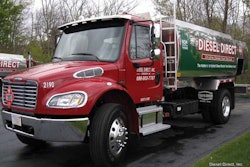
U.S. Transportation Secretary Ray LaHood kicked off the 2010 national Distracted Driving Summit on Tuesday, Sept. 21, by announcing new anti-distracted driving regulations for drivers transporting hazardous materials, commercial truck and bus drivers, and rail operators, and by identifying more than 550 U.S. companies – employing 1.5 million people nationwide – that have committed to enacting anti-distracted driving employee policies in the next 12 months.
The Department of Transportation also released interim data from its pilot enforcement campaigns in Hartford, Conn., and Syracuse, N.Y., showing that its “Phone in One Hand, Ticket in the Other” enforcement efforts already have dramatically reduced distracted driving behavior in both cities.
LaHood announced that he is initiating a new rulemaking to prohibit commercial truck drivers from texting while transporting hazardous materials. In addition, LaHood announced that two rules proposed at last year’s summit now have become the law of the land. Rules banning commercial bus and truck drivers from texting on the job and restricting train operators from using cell phones and other electronic devices while in the driver’s seat have been posted.
“We are taking action on a number of fronts to address the epidemic of distracted driving in America,” LaHood says. “With the help of the experts, policymakers and safety advocates we’ve assembled here, we are going to do everything we can to put an end to distracted driving and save lives.”
DOT also has been working with the Network of Employers for Traffic Safety to engage the private sector to promote anti-distracted driving policies in the workplace. NETS, which was created by the National Highway Traffic Safety Administration, is an employer-led public-private partnership dedicated to improving the safety and health of employees by preventing traffic crashes.
DOT and NETS announced that almost 1,600 U.S. companies and organizations have adopted distracted driving policies to date, covering about 10.5 million workers nationwide. An additional 550 organizations have committed to adopting policies that will cover another 1.5 million employees within the next 12 months.
“I am thrilled that businesses across the country are making anti-distracted driving policies an integral part of their employee culture,” LaHood says. “President Obama led by example last year by banning four million federal workers from texting behind the wheel. Employers across America are doing the same to help us set an example and keep our roads safe.”
NHTSA’s yearlong “Phone in One Hand, Ticket in the Other” pilot campaigns were launched in April to test whether increased law enforcement efforts combined with public service announcements can succeed in getting distracted drivers to put down their cell phones and focus on the road. During two weeklong periods of stepped-up enforcement to date, police in Hartford have written about 4,956 tickets and Syracuse police have issued 4,446 tickets for violations involving drivers talking or texting on cell phones.
Before and after each enforcement wave, NHTSA conducted observations of driver cell phone use and collected public awareness surveys at driver licensing offices in each test and comparison site. Based on these observations and surveys, handheld cell phone use has dropped 56 percent in Hartford and 38 percent in Syracuse to date. Texting while driving has declined 68 percent in Hartford and 42 percent in Syracuse.
“Good laws are important, but we know from past efforts to curb drunk driving and promote seatbelts that enforcement is the key,” LaHood says. “Our pilot programs in Syracuse and Hartford are critical pieces of our overall effort to get people to realize distracted driving is dangerous and wrong. I want to commend the police in Hartford and Syracuse for their excellent work keeping our roads safe and serving as a model for other communities.”
In 2009, nearly 5,500 people died and half a million were injured in crashes involving a distracted driver. According to NHTSA research, distraction-related fatalities represented 16 percent of overall traffic fatalities in 2009.













